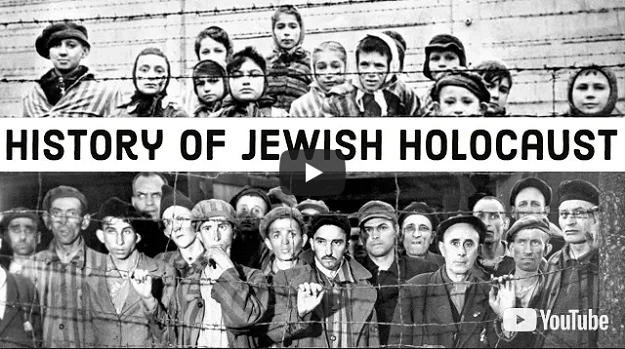Table of Contents
BACKROUND
• Throughout the Middle Ages in Europe, Jews were subjected to
antisemitism based on Christian theology, which blamed them for killing
Jesus.
• The political situation in Germany and elsewhere in Europe after World
War I (1914–1918) contributed to the rise of virulent antisemitism. Many
Germans did not accept that their country had been defeated, which gave
birth to the stab-in-the-back myth.
• This insinuated that it was disloyal politicians, chiefly Jews and
communists, who had orchestrated Germany’s surrender. Inflaming the
anti-Jewish sentiment was the apparent over-representation of Jews in the
leadership of communist revolutionary governments in Europe.
• By the time the National Socialist German Workers’ Party, or Nazi
Party,came to power in 1933, condition got worse. Hitler’s views of Jews
by making them the driving force behind
THE BEGINNING
• He viewed Marxism as a Jewish doctrine, said he was fighting against
“Jewish Marxism”, and believed that Jews had created communism
as part of a conspiracy to destroy Germany.
• Before and after the March 1933 Reichstag elections, the Nazis
intensified their campaign of violence against opponents.
• They set up concentration camps for extrajudicial imprisonment. One
of the first, at Dachau, opened on 9 March 1933. Initially the camp
contained mostly Communists and Social Democrats. The initial
purpose of the camps was to serve as a deterrent by terrorizing
Germans who did not conform.
• Throughout the 1930s, the legal, economic, and social rights of Jews
were steadily restricted.On 1 April 1933, there was a boycott of Jewish
businesses. Jews were disbarred from practising law, being editors or
proprietors of newspapers, or joining the Journalists’ Association.
THE BEGINNING
• Jews were not allowed to own farms.In Silesia, Jewish students were
restricted by quotas from attending schools and universities.
• Jewish businesses were targeted for closure or “Aryanization”, On 15
September 1935, the Reichstag passed the Reich Citizenship Law
and the Law for the Protection of German Blood and German Honor,
known as the Nuremberg Laws.
• Nazi racial policy aimed at forcing Jews to emigrate.Fifty thousand
German Jews had left Germany by the end of 1934, and by the end of
1938, approximately half the German Jewish population had left the Albert
Einstein, who was abroad when Hitler came to power, never returned to
Germany.
• In March 1938 Germany annexed Austria. Austrian Nazis broke into
Jewish shops, stole from Jewish homes and businesses, and forced Jews
to perform humiliating acts such as scrubbing the streets or cleaning
toilets.
INVASIONS
• When Germany invaded Poland in September 1939, it gained control of
about 2 million Jews in the occupied territory. Jews were concentrated in
ghettos in major cities.
• Food supplies were restricted, public hygiene was difficult, and the
inhabitants were often subjected to forced labour. In the labour camps and
ghettos at least half a million Jews died of starvation, disease, and poor
living conditions.
• Germany invaded Norway in April 1940. There were about 1,800
Jews in Norway, persecuted by the Norwegian Nazis. Also in 1940,
Germany invaded Denmark.
• The Germans invaded the Netherlands, Luxembourg, Belgium, and
France in May 1940.
EXTERMINATION
• After war broke out in 1939, new camps were established, some
outside Germany in occupied Europe.In January 1945, the SS reports
had over 700,000 prisoners in their control.
• It is estimated that the Germans established over 42,000 detention sites
throughout Europe – whether ghettos, concentration camps, prisoner-ofwar
camps, labour camps, or extermination camps.
• Forced labour of camp prisoners became commonplace and companies
utilized their cheap labour.The guards became much more brutal, and the
death rate increased as the guards not only beat and starved prisoners,
but killed them more frequently.
• Prisoner transportation between camps was often carried out in
freight cars with the prisoners packed very tightly.
EXTERMINATION
• Killing on a mass scale using gas chambers or gas vans was the main
difference between the extermination and concentration camps. From the
end of 1941, the Germans built six extermination camps in occupied
Poland: Auschwitz II-Birkenau, Majdanek, Chełmno, and the three
Operation Reinhard camps at Belzec, Sobibor, and Treblinka
• Victims usually arrived at the camps by train. Almost all arrivals at the
Operation Reinhard camps of Treblinka, Sobibór, and Bełżec were sent
directly to the gas chambers, with individuals occasionally selected to
replace dead workers.
• Those selected for death at all camps were told to undress and hand their
valuables to camp workers.They were then herded naked into the gas
chambers. To prevent panic, they told the gas chambers were showers or
delousing.
EXTERMINATION
• About 42,000 Jews were shot during the Operation Harvest Festival
on 3–4 November 1943.At the same time, rail shipments arrived regularly
from western and southern Europe at the extermination camps.
• Army leaders and economic managers complained about this diversion of
resources and the killing of skilled Jewish workers.By 1943 it was evident
to the armed forces leadership that Germany was losing the war.
• Auschwitz was gassing up to 6,000 Jews a day by spring that year. From
15 May to 9 July, 440,000 Jews were deported from Hungary to
Auschwitz-Birkenau, almost all to the gas chambers.
• Auschwitz was liberated, also by the Soviets, on 27 January 1945;
Buchenwald by the Americans on 11 April; Bergen-Belsen by the
British on 15 April; Dachau by the Americans on 29 April;
Ravensbrück by the Soviets on 30 April; and Mauthausen by the
Americans on 5 May.





















 WhatsApp
WhatsApp